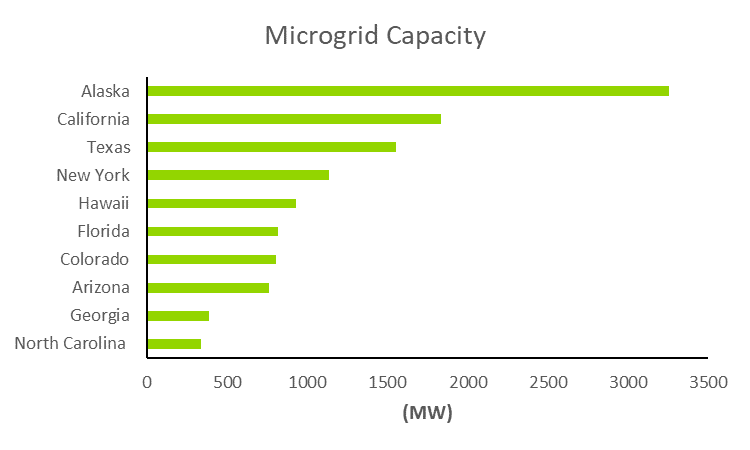How Alaska Fits into the Global Microgrid Movement

By Peter Asmus
This is an excerpt of a story from ACEP’s blog, From the Grid.
Remote regions of the world such as Alaska, once viewed as disadvantaged due to a lack of conventional grid infrastructure, have proven to be fertile ground for sustainable energy innovation. This innovation flows from challenges associated with providing reliable electricity without the benefit of traditional transmission and distribution systems. Economic pressures linked to the high cost of delivering traditional fossil fuels for most energy applications in a part of the world with relatively low per capita income is also a factor and a trait Alaska shares with much of the world seeking solutions for energy access.
Alaska is home to many paradoxes. It is a region of harsh climate and extreme cold, but it is also a global hotspot for microgrids. Alaska has long been a pioneer in deploying high-penetration renewable energy microgrids. These microgrid systems — some in continual operation for close to a century — built the business case for renewable energy integration well before the rest of the country, and the rest of the world, moved in this direction. When measured in terms of installed capacity, Alaska ranks No. 1 in the U.S. as of 2021, with over 3,500 megawatts installed according to Guidehouse Insights. Though the state’s relative market share has declined over the past few years due to accelerated growth in states such as California facing the continual threat of wildfires, it remains the national leader.
Alaska also has one of the highest adoption rates of microgrids in the world. The majority of citizens, businesses and institutions in Alaska are currently served by some form of microgrid, with some of the largest systems nested into the Railbelt grid, the state’s only major transmission system. Unlike the rest of the U.S., where majority of microgrids interconnect with a traditional power grid and primarily serve as a resiliency resource to respond to power outages, most of the microgrids serving communities in Alaska are remote power systems quite similar to microgrids now being deployed throughout Africa, the Asia Pacific and Latin America. In an ironic twist, the lack of traditional infrastructure in Alaska has forced this U.S. state to come up with solutions that not only address harsh climatic conditions but also seek to displace products that once fueled the entire economy. I’m talking about oil, natural gas and other hydrocarbons.
Ironically, the largest microgrids serving military bases and university campuses rely primarily on natural gas generation. So, they are lagging behind the much smaller community-based systems operating in more isolated sites. Therefore the Railbelt grid, as well as the continental grid, are now looking at the remote microgrids featuring renewables providing the majority of energy and power for lessons learned.
The high cost of diesel in Alaska mirrors the high energy costs that plague much of the world’s emerging economies. Since remote microgrids dominate the global market, what works in Alaska carries major implications for the rest of the world.
Read the full story at https://uaf.edu/acep-blog/how-alaska-fits-into-the-global-microgrid-movement%20.php.


